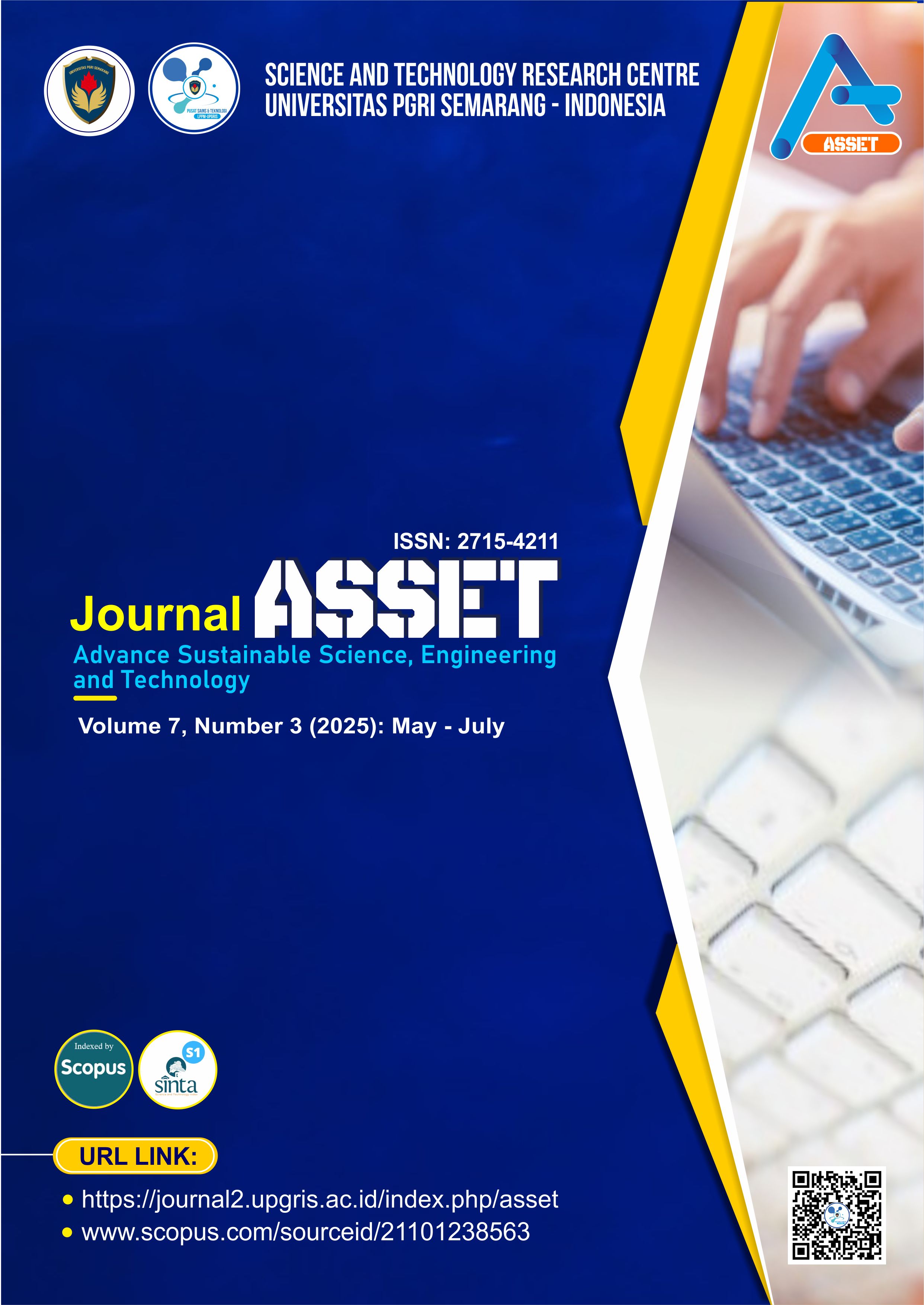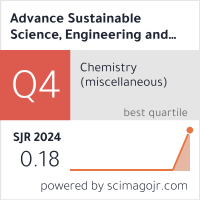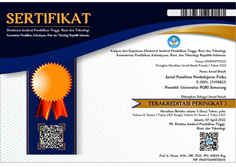Quantifying the Causal Impact of Employment Trends on Academic Performance Using Time-Series and Public Interest Data in Indonesia
DOI:
https://doi.org/10.26877/asset.v7i4.2358Keywords:
Causal Inference, CGPA, Google Trends, Granger Causality, Time-Series AnalysisAbstract
This study quantifies the causal impact of employment trends on academic performance using a hybrid model of survey data and time-series public interest data from Google Trends in Indonesia. Employing Granger causality and regression analysis, the research investigates eight determinants of GPA and their relationship to labor indicators. A purposive sample of 40 respondents and secondary data from 2011–2019 were analyzed. Granger tests reveal significant one-way causality from employment to GPA indicators, particularly in parental monitoring (F = 7.06; p < 0.05) and learning motivation (F = 9.68; p < 0.05). Regression analysis supports these findings with R² values above 0.50. Results highlight the potential of integrating behavioral data into educational analytics. This research contributes methodological innovation by incorporating public interest data to explain academic outcomes, with implications for predictive modeling in education policy and planning.
References
[1] Aggarwal R, Lee MJ, Midha V. Differential Impact of Content in Online Communication on Heterogeneous Candidates: A Field Study in Technical Recruitment. Information Systems Research, 2023;34(2):609-28. doi: 10.1287/isre.2022.1120.
[2] Isopahkala-Bouret U, Tholen G, van Zanten A. Introduction to the special issue: positionality and social inequality in graduate careers. Journal of Education and Work, 2023;36(1):1-8. doi: 10.1080/13639080.2023.2169995.
[3] Badan Pusat Statistik. Statistik Indonesia 2021. Feb. 2021. Available: https://www.bps.go.id/id/publication/2021/02/26/938316574c78772f27e9b477/statistik-indonesia-2021.html.
[4] Saini B, Mahajan G, Sharma H, et al. An Analytical Approach to Predict Employability Status of Students. IOP Conf Ser Mater Sci Eng, 2021;1099(1):012007. doi: 10.1088/1757-899X/1099/1/012007.
[5] Mezhoudi N, Alghamdi R, Aljunaid R, et al. Employability prediction: a survey of current approaches, research challenges and applications. J Ambient Intell Humaniz Comput, 2023;14(3):1489-505. doi: 10.1007/s12652-021-03276-9.
[6] Alibudbud R. Google Trends for health research: Its advantages, application, methodological considerations, and limitations in psychiatric and mental health infodemiology. Front Big Data, 2023;6. doi: 10.3389/fdata.2023.1132764.
[7] Rosmaini E, Kusumasari TF, Lubis M, et al. Study to the current protection of personal data in the educational sector in Indonesia. J Phys Conf Ser, 2018;978:012037. doi: 10.1088/1742-6596/978/1/012037.
[8] Zou T, Zhang Y, Zhou B. Does GPA matter for university graduates’ wages? New evidence revisited. PLoS One, 2022;17(4):e0266981. doi: 10.1371/journal.pone.0266981.
[9] Abraham B, Ambili PS. An Enhanced Career Prospect Prediction System for Non-computer Stream Students in Software Companies. In: Chatterjee P, Pamucar D, Yazdani M, et al., editors. Computational Intelligence for Engineering and Management Applications. Springer Nature Singapore; 2023:811-9. doi: 10.1007/978-981-19-8493-8_60.
[10] Bujang SDA, Abidin SZ, Jali NAM, et al. Multiclass Prediction Model for Student Grade Prediction Using Machine Learning. IEEE Access, 2021;9:95608-21. doi: 10.1109/ACCESS.2021.3093563.
[11] Ghaleb AM, Abdulkhaliq L, Al-nour HA, et al. Perceptions of Work–Family–Engineering Relationships Among Employed Female Engineers in Yemen: A Survey Study. Societies, 2025;15(1):13. doi: 10.3390/soc15010013.
[12] Zhao L, Zhang X. The Predictive Role of Contemporary Filial Piety and Academic Achievement on Multidimensional Emotional Intelligence Among Chinese Undergraduates. J Intell, 2025;13(7):81. doi: 10.3390/jintelligence13070081.
[13] Lubis M, Hasibuan MA, Andreswari R. Satisfaction Measurement in the Blended Learning System of the University: The Literacy Mediated-Discourses (LM-D) Framework. Sustainability, 2022;14(19):12929. doi: 10.3390/su141912929.
[14] Awang Santoso DI, Safirin MT. The Influence of Job Demand and Job Resources on Job Satisfaction Mediated by Work-Life Balance Among Employees at PT. Daya Tani Sembada (Rice Milling). Advance Sustainable Science Engineering and Technology, 2024;7(1):0250103. doi: 10.26877/asset.v7i1.649.
[15] Fu C, Miller C. Using Google Trends as a proxy for occupant behavior to predict building energy consumption. Appl Energy, 2022;310:118343. doi: 10.1016/j.apenergy.2021.118343.
[16] Ahmed M, Ahmad B, Ahmad M, et al. Bubble Identification in the Emerging Economy Fuel Price Series: Evidence from Generalized Sup Augmented Dickey–Fuller Test. Processes, 2021;10(1):65. doi: 10.3390/pr10010065.
[17] Zhang F, Zhao Y, Zhang S, et al. Spacecraft Equipment Health Condition Monitoring Based on Augmented Dickey-Fuller Test and Gaussian Mixture Model. In: 2021 IEEE International Conference on Mechatronics and Automation (ICMA). IEEE; 2021:1379–84. doi: 10.1109/ICMA52036.2021.9512583.
[18] Mohamed NMA, Binsuwadan J, Abdelkhalek RHM, et al. The Analysis of Cultural Convergence and Maritime Trade Between China and Saudi Arabia: Toda–Yamamoto Granger Causality. Sustainability, 2025;17(14):6501. doi: 10.3390/su17146501.
[19] Rosoł M, Młyńczak M, Cybulski G. Granger causality test with nonlinear neural-network-based methods: Python package and simulation study. Comput Methods Programs Biomed, 2022;216:106669. doi: 10.1016/j.cmpb.2022.106669.
[20] Ren X, Li J, He F, et al. Impact of climate policy uncertainty on traditional energy and green markets: Evidence from time-varying granger tests. Renewable and Sustainable Energy Reviews, 2023;173:113058. doi: 10.1016/j.rser.2022.113058.
[21] Sardareh SA, Brown GTL, Denny P. Comparing four contemporary statistical software tools for introductory data science and statistics in the social sciences. Teach Stat, 2021;43(S1). doi: 10.1111/test.12274.
[22] W W, Lubis M, Witjaksono W, et al. Implementation of Enterprise Resource Planning (ERP) using Integrated Model of Extended Technology Acceptance Model (TAM) 2: Case Study of PT. Toyota Astra Motor. In: 2019 7th International Conference on Cyber and IT Service Management (CITSM). IEEE; 2019:1-6. doi: 10.1109/CITSM47753.2019.8965342.
[23] Therry ACD, Ardiansyah R, Pusadan MY, et al. The Implementation and Analysis of The Proof of Work Consensus in Blockchain. Advance Sustainable Science, Engineering and Technology, 2024;6(1):02401018. doi: 10.26877/asset.v6i1.17878.
[24] Almalik O, Zhan Z, van den Heuvel ER. Tests for publication bias are unreliable in case of heteroscedasticity. Contemp Clin Trials Commun, 2021;22:100781. doi: 10.1016/j.conctc.2021.100781.
[25] Becher M, Hothorn LA, Konietschke F. Analysis of Covariance in General Factorial Designs Through Multiple Contrast Tests Under Variance Heteroscedasticity. Stat Med, 2025;44(7). doi: 10.1002/sim.70018.











